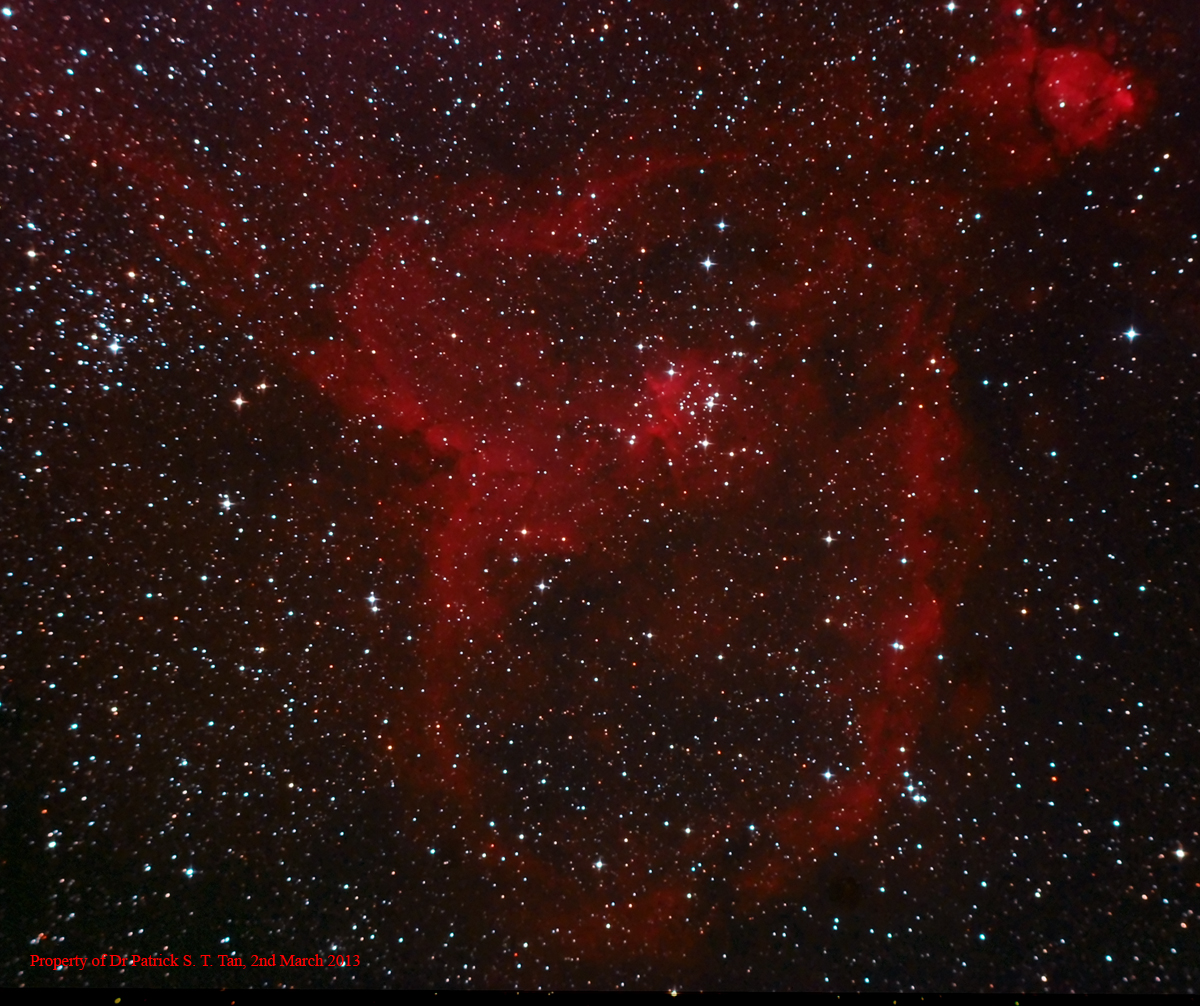
IC1805 - Heart Nebula
Date: 02/03/2013 Time: 1930hrs Location: Sunningwell Temperature: 2.6ºC Relative Humidity: 55%
Camera: Nikon D80 Scope: William Optics Z66 Apo Doublet at prime focus Mount: piggy-backed on Meade LX90 in equatorial mode Filter: Astronomik CLS (LPF broadband filter) Exposures: 4 x 10min + 1 x 5 min ISO: 1600 F ratio: 5.9 (No focal reducer) Guidance: Autoguided
The Heart Nebula and its companion nebula the Soul Nebula, IC1848, lie within the boundaries of Cassiopeia but are situated roughly midway between the constellations Perseus and Cassiopeia. The 'Heart' is so called because it resembles an asymmetrical valentine lying on its left side with the left half bigger than the right. It is an emission nebula - a hydrogen molecular cloud energised into its ionic form by the open cluster of young, energetic stars at the centre of the heart outline, designated Melotte 15. The brightest part of the nebula is the knot to the top right of the photograph which has a separate classification: NGC 896 and was the first part of the nebula to be discovered, being more visible. Both Heart and Soul Nebulae (the latter of which I hope to photograph next) lie 7500 light-years away in the Perseus arm of our galaxy. There are many photographs of this on the internet with much higher resolution, having been taken through telescopes of much larger aperture - but for a small refractor, this is not a bad end result. Aided by an exceptionally clear night with excellent seeing and high transparency. I was let down by the smaller number of exposures I was able to make, owing to the Lithium ion battery of my Nikon running out: it does this when it hasn't been used for some time and my last photography session was back in August 2012! The cumulative exposure time was only 45 minutes and I was aiming for 90 minutes.
Standard processing as before - 5 images stacked summatively with Maxim DL, background noise-pollution subtracted with a uniform mask in Photoshop, white and black point set with the levels command and selective midtone enhancement with the curves command. One pass of Noise Ninja with unsharp mask set at 70 and radius 2.0. One milestone - this is the first work I've done running my Autostar Suite and Envisage software on emulated Windows XP in a Parallels for Mac environment. I've retired my Sony Vaio - at least for astronomy work at home, I might still use it for astronomy in the field on the rare occasions, and I am now running an iMac as my astrophotography workstation, and my web publisher. (Hurrah - goodbye Windows - you lemon.)
HOME PICTURES: Solar system PICTURES: Wide field